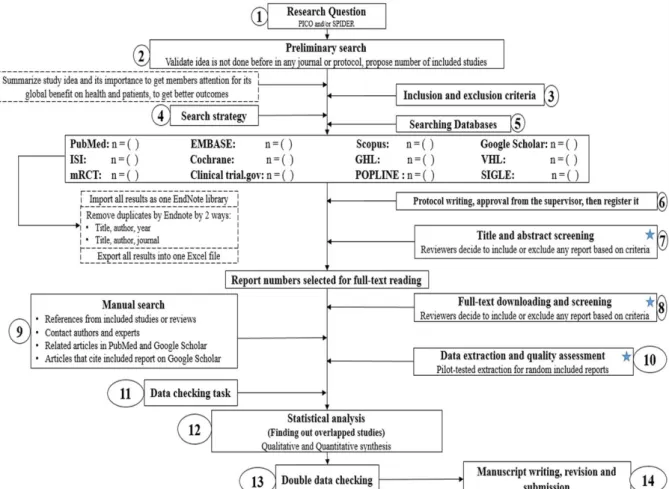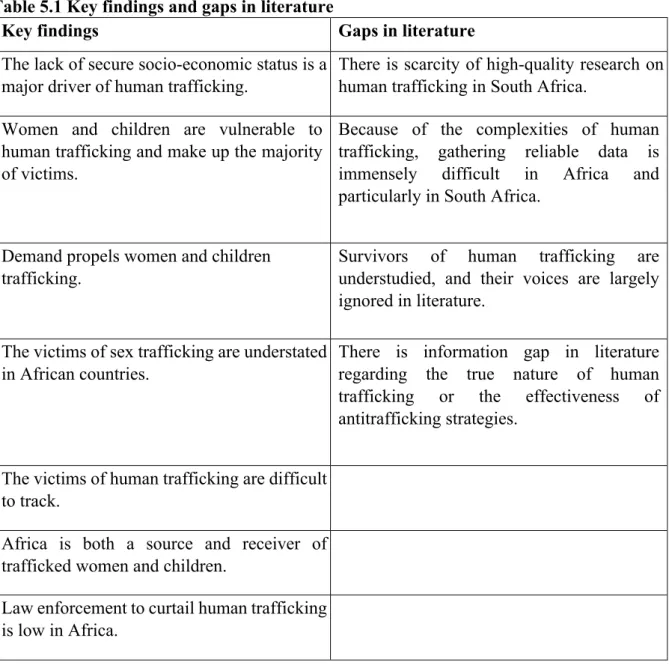This study systematically examined the most widespread perceptions about human trafficking specifically motivated by sexual exploitation. The study found that women and children fall victim to human trafficking as they try to escape poverty.
Background to the study
Nevertheless, child trafficking is among the most clandestine crimes embedded in societal tolerance or denial of the existence of the crisis, while its escalation is apparently driven by a seemingly insatiable demand (Cockbain & Olver, 2019). Therefore, an exploration of the most prevalent attitudes and beliefs about human trafficking for sexual exploitation may increase public awareness of the scale of the crisis and the possible negative consequences of the phenomenon.
Significance of the study
- Study aim
- Study objectives
- Research questions
What are the moral and legal implications of human trafficking and sexual abuse in Africa?
Structure of the dissertation
First, the study concludes that human trafficking for sexual exploitation is largely induced by poverty. Third, the study concludes that most researchers misrepresent African countries as they often paint Africa 'black' in terms of the continent's role in human trafficking.
- Introduction
- Definition of human trafficking
- Human trafficking for sexual exploitation in the world
- Features of human trafficking
- The nature of sex trafficking
- Causes of human trafficking
- The push factors
- Poverty, power and violence
- Demand side: exploitative uses
- Key actors in sex trafficking
- Psychological and medical consequences of human trafficking
- Legislation on human trafficking for sexual abuse and its enforcement
- Conclusion
Human trafficking for sexual exploitation is probably one of the most flourishing criminal businesses in the world. This disadvantages the victims of human trafficking, who end up completely dependent on their traffickers for survival. The literature further reviewed that the psychological impact on victims of human trafficking is enormous.
Introduction
Given the lack of comprehensive anti-trafficking legislation, the literature reviewed suggests that existing common law and statutory offenses have been a key instrument for prosecuting crimes in the trafficking process. The literature review revealed a lack of high-quality research on human trafficking, as well as a lack of evidence in most debates, policy-making and enforcement related to the topic. Furthermore, the complexity of human trafficking makes it difficult to collect reliable data to verify local, regional and global phenomena.
The flowchart below, proposed by Tawfik et al. 2019) provides a basic overview of the methodological structure of the systematic review. The research uses the spider search function as it provides a systematic strategy for searching qualitative and blended research studies. To define the main components of the review topic and to guide and standardize the search method, the SPIDER tool (Sample, Phenomenon of Interest, Design, Evaluation, Research type) was used.
The SPIDER tool is a better alternative to the more widely used PICO (Population, Intervention, Comparison, Outcomes) tool as it modifies the PICO elements to find quality journal articles (Cook et al., 2012). Furthermore, by defining important aspects of non-quantitative research questions, the SPIDER tool aids rigor in research (Cook et al., 2012).

Conceptual framework
Systematic review of the literature
Most of the reviewed literature confirms the perception that victims of human trafficking are exclusively women and children. In South Africa, victims of human trafficking are understudied and their voices are usually ignored. Women and children are vulnerable to human trafficking and constitute the majority of victims.
This study found that women and children are perceived as the only victims of human trafficking. Human traffickers and human trafficking in Southern and Eastern Europe: Considering the other side of human trafficking.

Problem formulation
Description of methods used in primary research
- Criteria for inclusion of studies in the review
- Hand searching
- Reference lists
The problem investigated by this study is to examine the most common beliefs and attitudes regarding human trafficking for purposes of sexual exploitation. In addition, this study also identifies the legal implications and the available legislation related to issues of human trafficking and sexual abuse. The most common methods used in human trafficking research are to compare human beliefs and attitudes and intervention strategies with comparable countries experiencing the same challenge.
Most of the studies that have been reviewed offer multiple views and views on sex slavery as a result of human trafficking. All African countries that have had to deal with human trafficking for the purpose of sexual abuse through written literature are included in this overview. The overview includes all studies that focus on victims of trafficking who were trafficked for the purpose of sexual exploitation, regardless of their age or country of destination.
This review included all studies conducted that focused on beliefs and attitudes regarding trafficking for sexual exploitation on the African continent. Furthermore, the notification also excluded victims of human trafficking whose destination was Africa, but whose country of origin is not Africa.
Conducting and documenting the search and selection process
- Details of study coding categories
- Missing data
- Summary table of retrieved articles and included articles
- Quality appraisal of retrieved articles
Critical review
- Data extraction
- Data analysis
- Synthesis
A meta-analysis component is frequently included in systematic reviews, which involves the use of statistical tools to synthesize data from multiple studies into a single quantitative estimate or summary effect size (Petticrew & Roberts, 2006). Systematic reviews often use statistical approaches to integrate data from the research studies under consideration and make new statistical findings based on the data obtained. Impellizzeri and Bizzini (2012) describe meta-analysis as the statistical analysis of a large collection of analysis results from independent research with the aim of integrating the findings.
Several scholars have argued that meta-analysis is an important technique for improving our understanding of organizational phenomena and determining how well data supports theoretically based ideas (Ones et al., 2017). In addition, the larger amount of data used in a meta-analysis provides more statistical power to identify effects than individual independent studies, which can improve the precision and accuracy of estimates. In addition, summary estimates can be subjected to hypothesis testing and the presence of publication bias determined.
In addition to these benefits, meta-analysis helps researchers resolve inconsistencies in research findings and identifies mediating factors that may illustrate why these differences exist. These were strong acceptable reasons for the researcher to analyze data using the meta-analysis method.
Checking the reference list for accuracy
Conclusion
Civil conflicts and economic difficulties often accelerate early marriages and the risk of human trafficking. An effective analysis of human trafficking flows should be aware of a number of factors.
Introduction
Perceptions related to lack of a secure socio-economic status is a cause of human
- The push factors: poverty, power and violence
The perception that victims of human trafficking are to blame for their victimisation
Studies confirm that human trafficking depends on the existence of source countries with people deprived of sustainable economic and living conditions, and destination countries with people and industries that crave cheap labor or cheap prostitutes to increase their profits. Research conducted on African people's perceptions of human trafficking in Ghana, Nigeria, South Africa and other African countries shows that the crime has been fueled largely by the demand for victims' labor, coupled with the increasing ease of global travel and immigration (Urama & Nwachukwu, 2017). Most of the literature reviewed indicates that extreme poverty in Africa remains the most important factor contributing to human trafficking (Dunne, 2012; Yingwana, Walker, & Etchart, 2019).
Human trafficking is fueled by source countries maintaining a constant supply of persons seeking better economic opportunities and destination countries supporting the trafficking process by increasing the demand for free labor and/or free subjects for prostitution. The literature suggests that the existence of a lucrative market for trafficked persons, alongside poverty and weak political institutions, human trafficking remains too shameful to eradicate (Bello, 2018). Perceptions that human trafficking is synonymous with sex trafficking and that victims of human trafficking are women both influence the behaviors and character traits that the participants in that study focused on, particularly the most prevalent beliefs and attitudes about trafficking. of women and children for sexual purposes. exploitation in Africa (Dempsey, 2017).
A study conducted by Cockbain, & Olver (2019) in sex trafficking cases focused on the victim and little consideration was given to the role of abusers in the entire trafficking supply chain. However, while the above view acknowledges the active participation of traffickers in the human trafficking supply chain, the victim bears the brunt of the blame.
The perception that women and children are the only victims of trafficking
The perception that demand propels the trafficking of women and children
The perception that victims of sex trafficking are understated in African countries
The perception that victims of trafficking are difficult to track
Absent or weak enforcement of legislation: this factor also significantly determines trafficking flows. Wherever such laws exist, corruption in law enforcement or legal systems facilitates trafficking within countries or across international borders. In Botswana, where officials are said to be vigilant, human trafficking flows often resort to circuitous routes to avoid detection (Taylor & Jamieson, 1999).
For example, a criminal group may gain control of a particular entry point into a particular country and this route may then develop into a 'highway' for human trafficking. Law enforcement officials in East and West Africa have reported difficulties in tracing the nationalities of trafficking victims. Multiple destinations: In Africa, most countries of origin show patterns of trafficking that indicate multiple destination countries (with an average of 3).
This is particularly common in West Africa, with an average of trafficking involving more than four destination countries. The origin of most victims of human trafficking remains unknown due to a lack of identity documents or their falsification.
The perception that Africa is both a source and receiver of trafficked women and children
The perception that transit countries have no role in trafficking
The perception that law enforcement is very low in African countries
Conclusion
Although trends or characteristics of human trafficking can be extrapolated in the context of South Africa, these studies are often unable to provide credible and comprehensive data necessary for successful policy planning and management.
- Introduction
- Summary
- Low socio-economic status is a cause of human trafficking
- Victims of human trafficking are to blame for their victimization
- Women and children are the only victims of trafficking
- Demand propels women and child trafficking
- Victims of sex trafficking are understated in African countries
- Victims of trafficking are difficult to track
- Africa is only a source of trafficked victims
- Law enforcement is low in African countries
- Conclusion
- Implications for the study
- Recommendations
- Limitations
- Concluding remarks
This study contributes to the academic knowledge of human trafficking in Africa for the purpose of sexual exploitation. Therefore, the findings from this current study make a significant contribution to the formulation of human trafficking policy in South Africa. In addition, there appeared to be a small number of researchers investigating the issue of human trafficking.
The Root Cause of Human Trafficking in Nigeria, African Center for Advocacy and Human Development, 13th UN Crime Congress, Doha, Qatar. The Criminal Justice Response to Human Trafficking in Nigeria and South Africa: Suggestions for Better Performance. Enforcement of anti-trafficking law in South Africa: The case of the drone.
Sex work, migration and human trafficking in South Africa: from polarized arguments to potential partnerships.
Ethical Clearance
Extraction Table
PRISMA 2009 flow diagram
Coding and data analysis flow chart